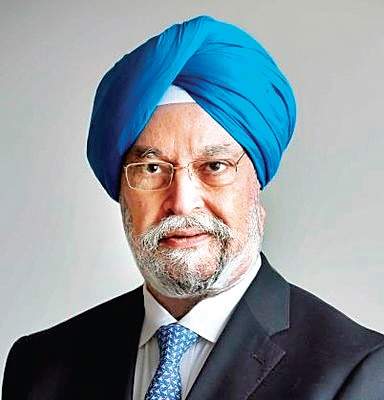Guest Column
The Advent of the Cycle Sharing System in India


Simon Selvaraj, Associate Director – Strategic Consulting & Lead – Urban Solutions (Sri Lanka) JLL India
Boosting last-mile connectivity, expanding catchment areas for the city’s rapid transit systems; direct impact on real estate development
Last Mile Connectivity! Today it has become one of the most gruesome issues faced by citizens living in urban India, especially the ones dependent on multiple public transport systems for their daily commute.
Our cities are seeing huge investments to uplift and augment their transportation network and are expanding their rapid transit systems. This is leading to an astonishing transportation structure in the country. In spite of all such remarkable developments, the point of providing affordable and convenient ‘last mile connectivity’ to the public transport networks continues as a comparatively neglected area of focus. Certain part of cities are being served with para-transit modes such as share auto-rickshaws and feeder bus services but these services are limited to a few and selective stations. Similarly, though walking becomes an inevitable last mile connectivity option, it comes with a disclaimer: ‘the local climate, physical condition and distance’.
To overcome this major public concern, our cities are slowly being upgraded with an important strategic initiative to expand their sustainable transport modes termed as ‘Cycle Sharing System’.
Compared to other transport networks, Cycle Sharing schemes are reasonably low cost and easy to implement which proves to be the major reason for its boom at an unprecedented rate globally. And it’s an easy win for governments and urban societies, which can boost their green credentials by embracing such an environmentally friendly design.
At present, more than 700 cities across the globe have their own cycle-sharing systems, and more cities are added to the count every year. The largest systems are in China, in cities such as Hangzhou and Shanghai. The European cities including Paris (Velib Bike Sharing System), Copenhagen (ByCyklen Smart Bike System) and the cities of United States such as Washington, D.C (Capital Bikeshare), Newyork (Citi Bike) etc. are highly successful systems that have helped to promote cycling as a viable and valued transport option.
After imprinting its wheels on major cities of the world, now in recent years the Cycle Sharing System has its wheels on Indian roads. Our metro cities including Delhi (Planet Green Bikes), Ahmedabad (MYBYK), Bangalore (Atcag), Mumbai (Cycle Chalao) have already started experimenting with the concept of cycle sharing. Though the success rate of the system in Indian cities are not so high, with the lessons from the experiences of these cities and the success stories of European and American cities, Corporation of Chennai is also now keen in implementing a successful cycle sharing system.
At present in India, the top 20 Smart Cities have already embarked on various sustainable transport initiatives such as the construction of expanded footpaths on all arterial streets, implementation of pedestrian zones to facilitate access to commercial areas and cultural landmarks and IT-based on-street parking management system in their Smart City Mission proposals. Supplementing all these initiatives, instigation of cycle sharing system is expected to enhance these efforts there by helping the cities achieve their goals on sustainable transportation.
Generally, this system is implemented in phase wise. The identification of the appropriate coverage area for each phase is best carried out by qualified planning bodies through surveying and statistical data analysis. Surveys are also the key to locate ideal cycle station spaces based on the locality, connectivity, intensity of public movement and space availability for the docks. Based on the survey results, the system size including the number of stations, number of cycles and corresponding number of docks in each station can be determined. The most successful systems have 2-2.5 docks for each cycle.
The cycle station locations are highly dependent on the actual local environment. Stations are mainly located around the core city areas covering all the public and recreation spaces, public transport hubs, malls, cultural landmarks, academic institutions, government offices, market areas etc. The variety of options for ideal station spaces include wide pavements, space between landscaped areas, areas beneath flyovers and bridges, space adjacent to bus stops, on-street parking spaces etc.
The features of the Cycle Sharing System will include
- Dense network of stations across the coverage area, with spacing of approximately 300 m between stations
- Fully automated system to check cycles in or out avoiding the need for manual monitoring at the stations
- Radio frequency identification devices (RFIDs) to track the cycles
- Real-time monitoring of station occupancy rates through GPRS facilitating the redistribution of cycles
- Advertising space on cycles and at stations (provides revenue generation options for system operator/ Corporation)
- Pricing structures will be finalized in such a way that it encourages short trips, helping to maximize the number of trips per cycle per day
On boosting the last-mile connectivity, cycle sharing thereby expands the catchment areas for the city’s rapid transit systems and will also have direct impact on real estate development. Also by encouraging a shift to sustainable modes the dependency on automobiles will be highly reduced, especially for short trips. Bicycling is often faster than driving in urban areas, and one can cover a lot more territory than he/she can by walking.
JLL India’s Strategic Consulting team has advised a number Urban Local Bodies on implementation strategies for cycle sharing systems, which have brought in numerous benefits such as reduced traffic congestion, vehicle emissions and demand for motor vehicle parking for cities. Moreover, this will also extend the health and wellness benefits of bicycling to users. Ultimately, the system will support the transformation of city streets to become environments where pedestrians and bicyclists feel safe and comfortable.
-



 Interviews4 weeks ago
Interviews4 weeks agoHigh Rental Yield, Price Appreciation, Stable Growth, Make Sydney an Ideal Realty Investment Option: Haansal Estate
-



 News3 weeks ago
News3 weeks agoManasum Senior Living Launches IKIGAI GOA, A Senior Living Community in North Goa, in collaboration with Prescon Homes
-



 News2 weeks ago
News2 weeks agoKW Delhi 6 Mall Onboards New Brands
-



 News3 weeks ago
News3 weeks agoBridging India Divide: Top 5 Tier- 2 Cities to Focus On
-



 News1 week ago
News1 week agoGodrej Properties Sells Rs 3k cr+ Homes of Godrej Zenith, Gurugram, within 3 days
-



 News2 weeks ago
News2 weeks agoCommercial Realty Gets Tech Savvy: Fast Construction, Enhanced Convenience
-



 News3 weeks ago
News3 weeks agoMultipoint Connection – A Definite Boon
-



 News2 weeks ago
News2 weeks agoRBI’s Status Quo on Key Policy Rates to Help Maintain the Real Estate Growth Momentum, Say Industry Stalwarts























